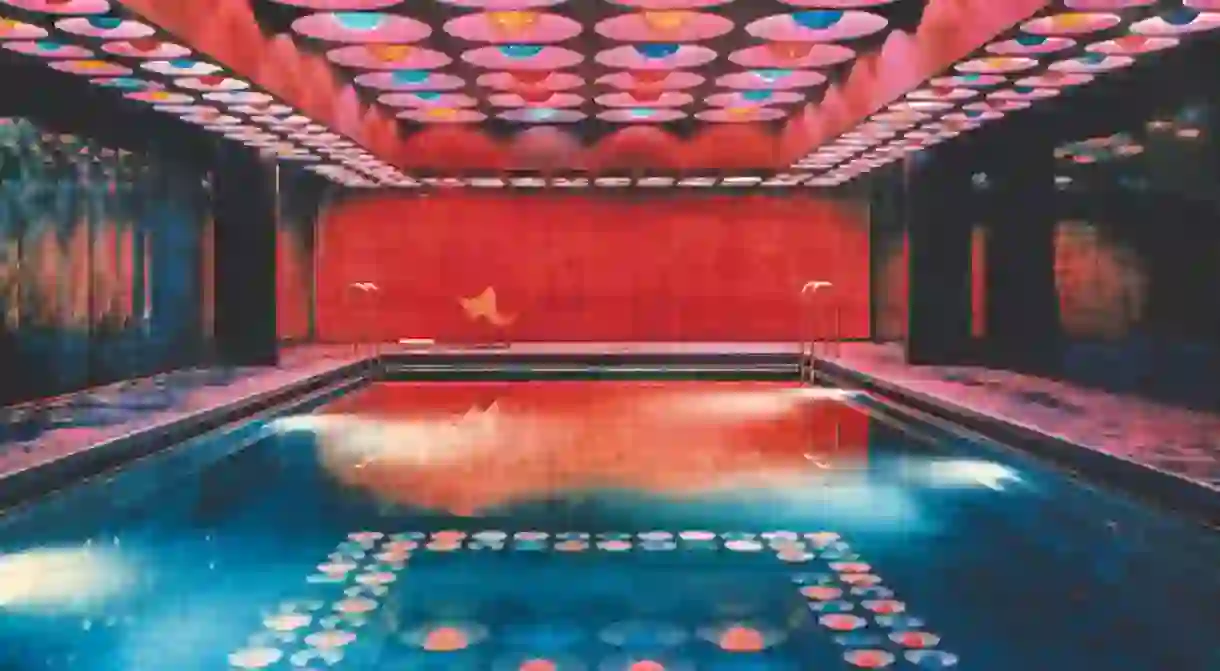Design Masters: Verner Panton

Verner Panton was Denmark’s most exuberant 20th-century designer, who rejected Scandinavia’s muted minimalism in favour of psychedelic interiors and conceptual installations. This excerpt from Verner Panton, written by Ida Engholm and Anders Michelsen, reveals how the Danish designer became an icon of the 1960s and 1970s Pop movement.
“A less successful experiment is preferable to a beautiful platitude,” said Verner Panton. One of Denmark’s most important and distinctive design personalities, Panton was born into, and educated in, a Danish and international world after World War II, which seemed to be made for modern design. In his time, he was considered an enfant terrible, but he was really a trailblazer who combined pragmatic design approaches with a direct use of the possibilities made available by the new technologies, materials and production systems that emerged in the post-war era.

His designs are renowned for through the use of colour coupled with an almost scientific approach to the exploration of systems as a basis for the development of chairs, lamps, textiles and the celebrated interior designs Panton referred to as “environments”. His products were manufactured in Denmark and also by the leading international manufacturers of the day who set new agendas for design.
Through his technological and material-related investigations, Panton sought to rethink popular basic genre types, such as the chair and the lamp, and challenged the way in which we decorate our homes and our workplaces.

Design-historical debates have focused on Panton’s stance in relation to the Danish design tradition of the 1950s and 1960s. Contemporary furniture designers, such as Børge Mogensen, Hans J Wegner and Poul Kjærholm, were highly successful on the international market as representatives of the “golden age of Danish design”. Panton stood out, however, appearing to comment on his own generation from a markedly different position that would lead him to completely new places.

Panton was ‘Danish’ in the sense that he shared the practical and concrete design approach that characterises the Danish furniture tradition. But he appears much less Danish if we consider his experiments with new materials and idioms. In Denmark, Panton’s furniture-design colleagues worked with wood and natural materials, while he worked with plastic, Plexiglas, steel, foam rubber and other synthetics. And while they were cultivating modernised craft-related traditions, Panton was aiming to create fully industrially manufactured products intended for the mass market.

Panton’s most radical designs were his “environments”. They were completely in tune with the international zeitgeist of the 1960s and 1970s, where striking architectural projects such as Archigram in England and Archizoom Associati in Italy were developing visions for the innovative use of post-war technologies and systems in environments for modern life. Panton supplied some of the international movement’s most radical expressions, such as Visiona 2 from 1970, which calls to mind a futuristic spaceship that has crash-landed on top of a commuter train station.

However, in contrast to Archigram and Archizoom Associati’s experiments, Panton’s formats were closer to the users, and it was specifically the practical and often low-cost results that were put into production. This included the Flowerpot lamp, which both lights up and disappears, somewhat self-critically, like a cartoon thought bubble, having popped out of the head of Panton’s mentor Poul Henningsen. Many people know the Flowerpot lamp because they own, or have owned, one. Panton created practical objects that were of use, even though he enjoyed pushing the boundaries recognised by ordinary people.

In fact, Panton was abreast of the social conventions associated with “ordinary people”. He entered into the post-war era as part of a great movement that believed in widespread social progress, either by means of sophisticated design solutions or through the reforms that ultimately gave rise to the social welfare models that presently inspire people around the world.

Somewhere in the midst of the cultural, artistic and aesthetic developments that characterised the new welfare societies during the first decades after World War II, we find Verner Panton and his universe of design. It is a universe that has now been absorbed by the processes of globalisation, which in this context simply means that a growing number of people seek almost the same thing that appealed to Panton back in the 1960s and 1970s: an essentially exciting and challenging life, but also a socially mobile life; a comfortable life, as embodied by Panton’s first chair, the Bachelor chair – simple, light, elegant and eminently portable. Panton seemed quite in step with Poul Henningsen’s dictum: “The future comes by itself; progress does not.”

This is an edited excerpt from Verner Panton by Ida Engholm and Anders Michelsen, published by Phaidon, available from 14 September 2018. Buy your copy here.
Read more interviews in the Design Masters series here.













